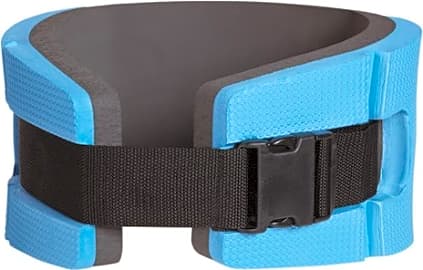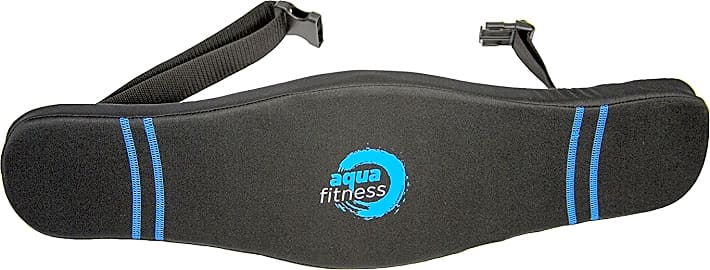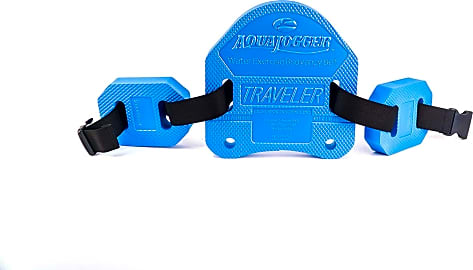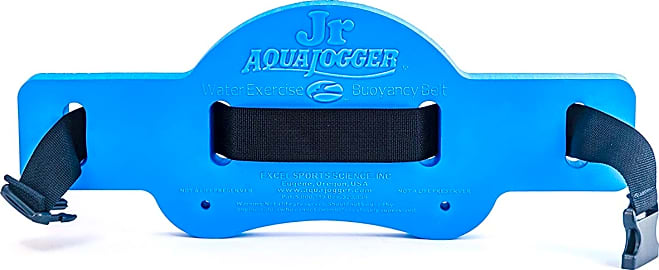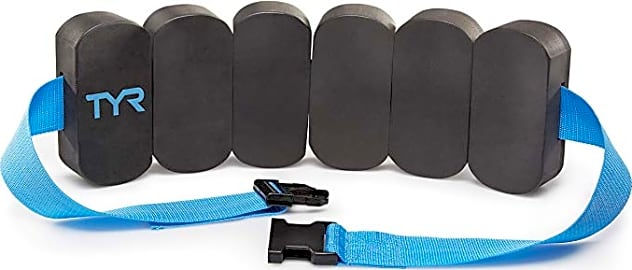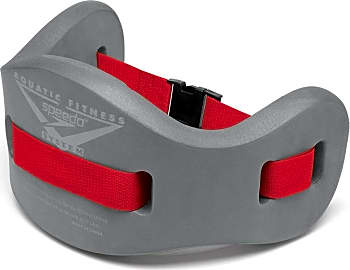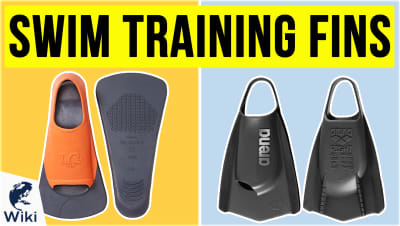The 9 Best Buoyancy Belts

This wiki has been updated 37 times since it was first published in October of 2015. Perfect for water-based physiotherapy and aerobics, or simply to give you more confidence in the water, these aqua jogger belts will keep you afloat at the pool, lake, or beach. Coming in a variety of styles to suit any purpose and any body size, they're an ideal way to enhance your exercise routine with a little extra buoyancy. They aren't life preservers, though, so use them with caution. When users buy our independently chosen editorial choices, we may earn commissions to help fund the Wiki.
Editor's Notes
January 02, 2020:
We hope it goes without saying, but we'll say it anyway: buoyancy belts are not life preservers or vests, and should not be used as such. In other words, if you don't know how to swim, don't expect to put one on and be safe in the water. And if you put one on a child, you will still need to provide close supervision and monitoring, whether they are in deep or shallow water.
That said, for the purposes of aquatic exercise, it remains tough to top the Water Gym Float Belt and the AquaJogger Active. These models aren't necessarily inexpensive, but they are made to high quality standards with materials that can withstand some wear and tear. We've added the Hydro-Fit Classic as a top choice, as well. We like that it has a belt that's long enough for adjustability, and that it is offered in three sizes. There's also the AquaFitness Deluxe, but it doesn't stay put around the waist as well as some; on the other hand, it doesn't have the premium price tag, so it may be fine for occasional use. And, finally, we've added the TYR Aquatic Flotation Belt. This model doesn't have incredibly durable foam, but it is affordably priced. You can extend its life by rinsing the chlorine off and storing it away from heat and sun, just as with most other aquatic gear, from swim goggles to caps.
Special Honors
Aqua-X Training Core Belt Just one glance at the Aqua-X Training Core Belt and you can probably tell it means business, offering articulated foam that keeps you comfortable and supported over long training sessions. The partial mesh construction is a nice touch, helping it to dry more quickly for easy storage. aquasphereswim.com
How You Can Benefit From A Buoyancy Belt
A buoyancy belt helps to elevate your center of gravity closer to the surface, where you have more control over your positioning than underwater.
For some reason, I’ve never been able to do the dead man’s float. That’s when you splay your arms and legs out in a body of water, and let your natural buoyancy keep you afloat. It always felt like my midsection would sink no matter what shape I took or how much breath I forced into my lungs. Over time, I developed a different way to entertain myself in the pool: expelling all the air from my lungs and allowing myself to sink. This I found particularly easy to do.
Despite the fact that it is quite easy for the majority of people to float in a pool, there are those among us who could use a little help. In some cases, that help is necessary to keep us from drowning, while in others it’s more about maintaining control during aquatic exercise or adding a little layer of resistance to aquatic weight training. That’s where buoyancy belts come in handy.
On children, buoyancy belts serve as a less intrusive life jacket. Teaching kids to swim at an early age can do wonders for their health and wellness, and also set them up for a lifetime of water-born fun. Swimming is hard work, though, and kids can tire easily in the water. If their form is still a work in progress, they might find themselves fighting to stay afloat. A life jacket would prove too bulky in this situation, preventing them from learning the basics of a good stroke. A buoyancy belt, by contrast, would keep them afloat while also freeing up their arms and upper body to maintain a comfortable and proper swimming technique.
Adults who are just learning to swim can benefit from the use of a buoyancy belt in much the same way as children. If these adults already know how to swim, however, they can still find great uses for a good belt. For starters, any adult using a pool for aerobic exercise or weight training would benefit from being able to control their positioning in a pool. The same could be said for anyone using aquatic exercise as a means for rehabilitation after an injury. A buoyancy belt helps to elevate your center of gravity closer to the surface, where you have more control over your positioning than underwater. That means you’ll have an easier time performing any variety of exercises while partially submerged.
For athletes in training, buoyancy belts add an extra layer of resistance in the water. Trying to swim a few feet or inches below the surface becomes much more difficult with an additional force pulling you upward. It takes a lot of total body strength — especially strength in the core — to keep yourself underwater while wearing a buoyancy belt. It’s the aquatic equivalent of wearing a weight vest when running.
How To Choose The Right Buoyancy Belt For You
Choosing a buoyancy belt shouldn’t be a terrifically difficult process. The easiest way to narrow down our list to a few viable options is to ask yourself who’s going to wear the belt most often, and for what are they going to use it.
The first thing you’ll need to do to ensure your comfort is make sure you’ve found a buoyancy belt that fits.
If the belt is meant for a child, or for anyone of a significantly smaller stature, make sure it’s designed to fit a more diminutive frame. Adult buoyancy belts would likely be too loose for a child, and if they slip off, the young swimmer could be in danger. A child is also likely to have more free time to spend in the pool than an adult, and little to no sense as to whether they’ve been in there too long. That means a belt made from materials that won’t let water inside — even after prolonged periods of exposure — is an absolute necessity.
For adults, questions of usage time are also important, but comfort becomes the most vital aspect of belt selection. You can mandate that your kids wear their buoyancy belt if they want to get in the pool. If you don’t find your belt comfortable, you’re just going to take it off, and your mom won’t be there to yell at you. The first thing you’ll need to do to ensure your comfort is make sure you’ve found a buoyancy belt that fits. If you’re on the larger side, that means making sure the adjustable portion of the belt can fit your waist. If you’re significantly thin, you might find yourself in the market for a children’s belt instead.
If you intend to use your buoyancy belt to increase resistance in the water in the pursuit of greater swimming strength, make sure you get a belt that contours nicely to the waist. Some of the bulkier options out there wrap around the waist only because you force them to do so. These are fine for basic aquatic aerobics, but a snug, ergonomic fit is necessary if you want to be able to swim properly.
Additional Buoyancy Safety Tips
Just because you have a flotation device strapped to your stomach, that doesn’t mean there aren’t some significant dangers to beware of when you enter a pool. Follow these tips to make sure your experience is as safe and fun as possible.
Whenever you finish using it, wipe it down and store it out of the sun.
If your kids are in the pool, make sure you or another adult is there to keep an eye on them. As they get used to their buoyancy belt, they may have a hard time getting comfortable in the pool, or navigating their newfound floating position. That kind of struggle can cause the belt to come loose. Whatever the cause, if their belt slips, you’d better be there to make sure they’re okay.
Take good care of your buoyancy bet, as well. Whenever you finish using it, wipe it down and store it out of the sun. Leftover water can become a breeding ground for bacteria. Not only can that bacteria transfer to your skin the next time you wear the belt, both it and exposure to sunlight can weaken the belt’s materials, allowing water to enter its structure and weigh it down. This can reduce the effectiveness of the belt, and even add a level of danger to your time in the pool.



